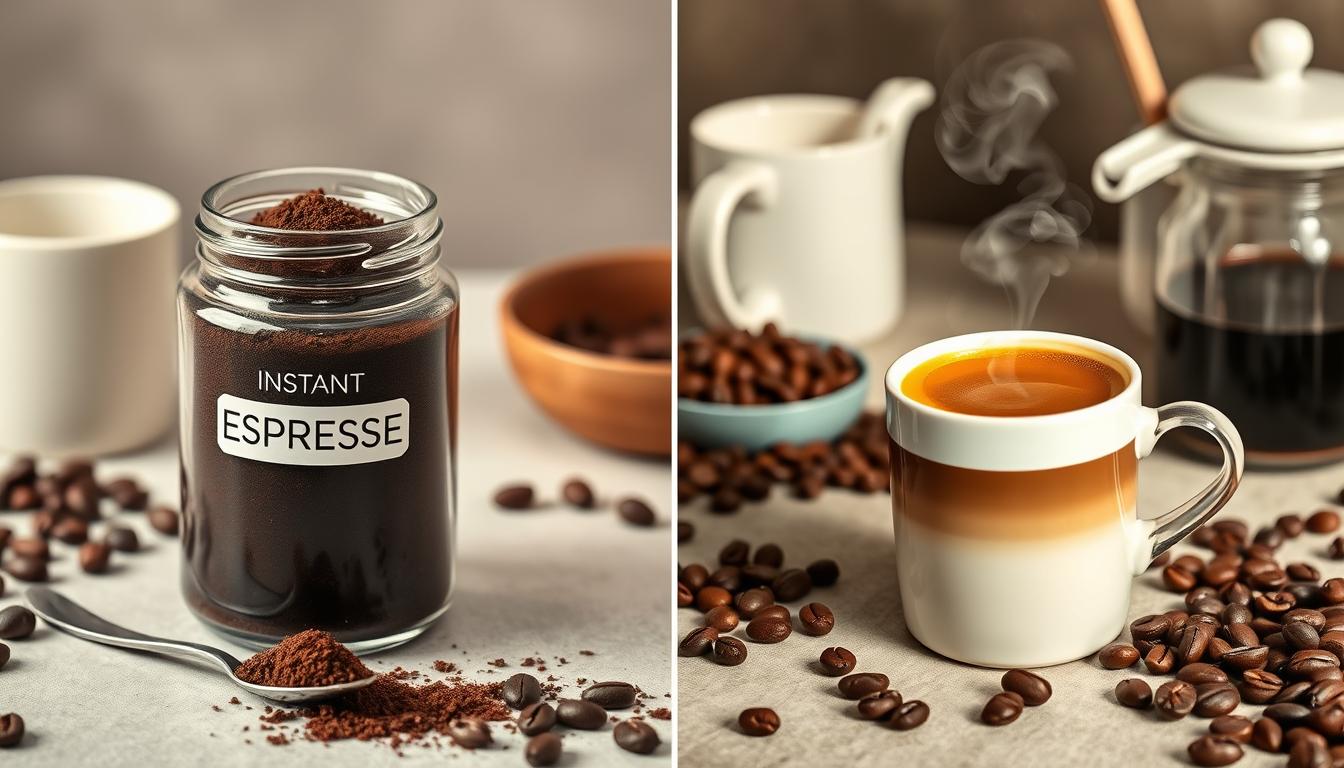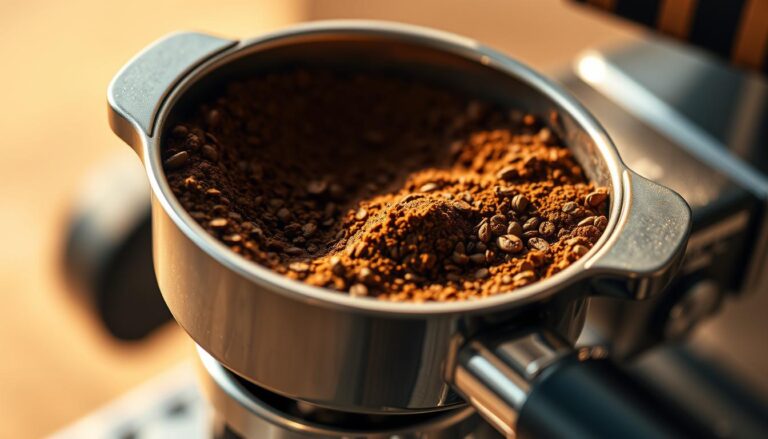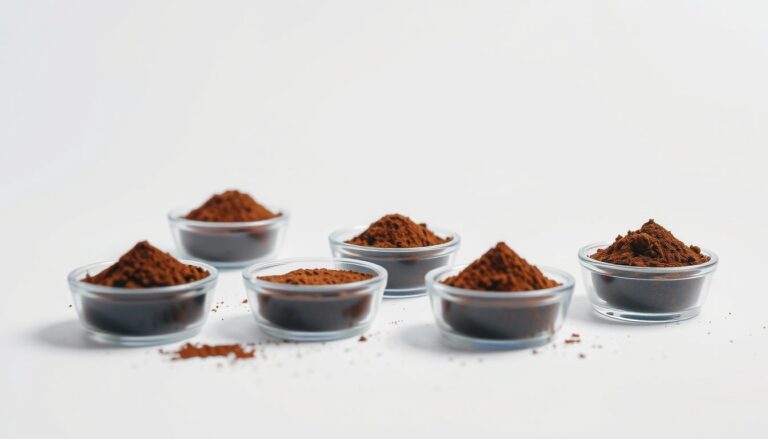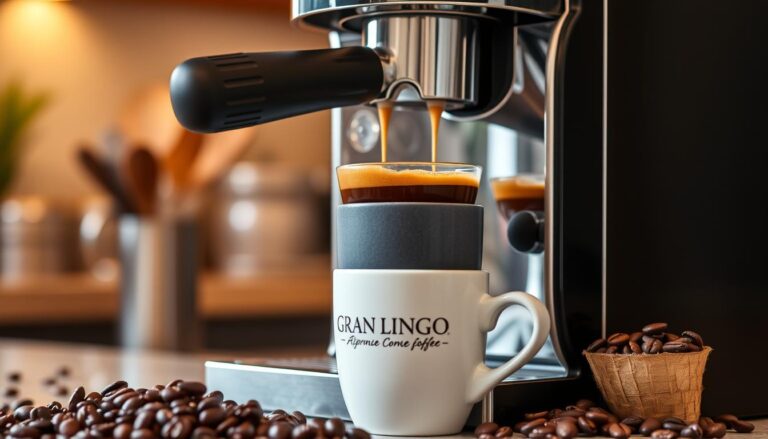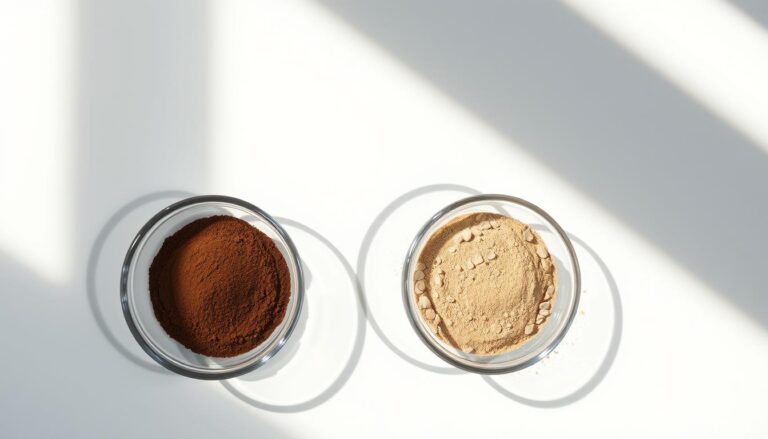Ever wondered if that jar of instant espresso in your pantry is really just another version of instant coffee? The world of quick caffeine fixes is more complex than you might think.
As a coffee enthusiast, I’ve found that instant espresso and instant coffee are not the same. They offer quick caffeine solutions but differ in production, flavor, and purpose.
The history of these powdered coffee products is fascinating. Instant coffee has its roots in 1771 Britain. The first espresso machine was invented by Luigi Bezzera in 1901. Today, these products have changed how we consume coffee.
Instant coffee brands like Waka Coffee use freeze-dried Arabica beans for a smoother taste. Instant espresso powder, on the other hand, offers a more concentrated flavor. It’s designed mainly for baking and cooking.
Key Takeaways
- Instant espresso and instant coffee are not the same product
- Instant espresso powder is more concentrated and flavor-intense
- Instant coffee is better for drinking, espresso powder for cooking
- Caffeine content varies between the two products
- Production methods differ significantly
Instant Coffee and Instant Espresso
Coffee lovers have two main options for quick caffeine: instant coffee and instant espresso. These two types differ in their processing and roasting. This makes them unique in the coffee world.
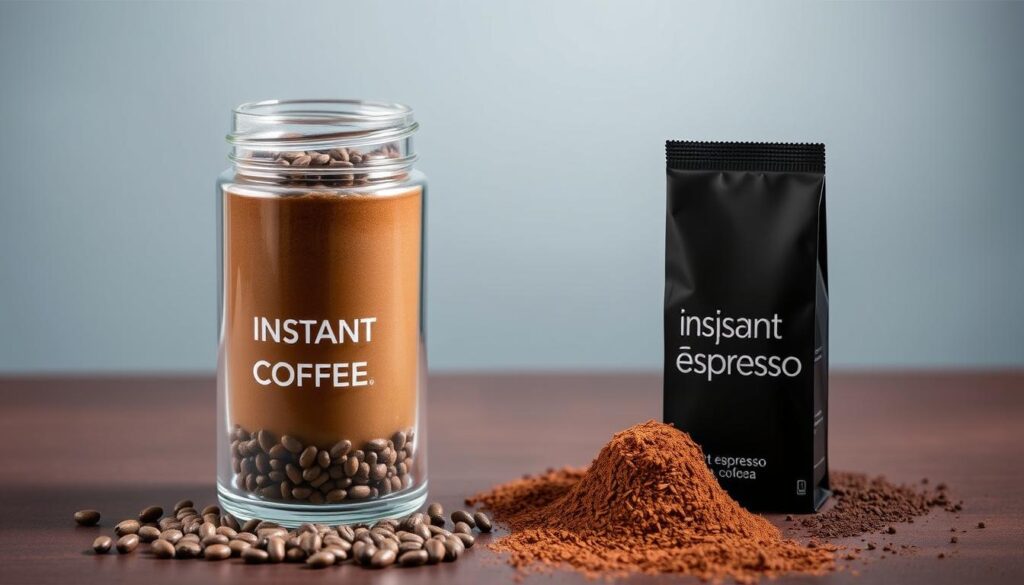
What is Instant Coffee?
Instant coffee is a quick way to enjoy coffee. It’s made by brewing coffee and then drying it out. This turns it into a powder or granules that dissolve in hot water.
- Typically made from a blend of Arabica and Robusta beans
- Quick preparation method
- Designed for rapid coffee consumption
What is Instant Espresso?
Instant espresso is different from regular instant coffee. It’s made by brewing espresso and then drying it into a fine powder. This gives it a stronger flavor.
Instant espresso powder offers a robust taste that closely mimics traditional espresso brewing techniques.
Key Differences in Production
Instant espresso’s production involves special steps. Dark roast coffee beans are used, making the flavor more intense.
- Instant coffee uses general brewing techniques
- Instant espresso requires specific espresso roasting methods
- Flavor concentration varies between the two products
Whether you need a quick caffeine boost or a strong coffee taste, knowing the differences helps. This way, you can pick the right instant coffee for you.
Taste and Flavor Profiles of Instant Espresso and Coffee
Exploring coffee types reveals key differences between instant espresso and instant coffee. These differences are important for both coffee lovers and casual drinkers. Instant beverages offer unique flavors that make them stand out in the world of coffee.

Comparing the Taste Experience
Instant coffee brands have their own unique flavors. Instant espresso has a stronger, more intense taste than regular instant coffee. This is because of special production methods that capture the true essence of espresso.
- Instant espresso: Bolder, more intense flavor
- Instant coffee: Milder, smoother taste
- Espresso powder: Highly concentrated flavor ideal for cooking
Aroma Differences
The aroma of these coffee types is also different. Instant espresso has a rich, strong scent like freshly brewed espresso. On the other hand, instant coffee has a lighter, less intense aroma.
“The true essence of coffee lies not just in its taste, but in its captivating aroma.” – Coffee Enthuasiast
Caffeine Content Variations
Caffeine levels differ between instant coffee and espresso. An 8-ounce serving of instant coffee has 30-90 mg of caffeine. Instant espresso shots have about 63 mg. The exact amount depends on the brand and how it’s made.
- Instant coffee: 30-90 mg per 8 oz
- Instant espresso: Approximately 63 mg per shot
- Fresh ground coffee: Around 145 mg per 8 oz
The choice between instant espresso and instant coffee depends on personal taste and how you plan to use it.
How to Use Instant Espresso and Instant Coffee
Coffee lovers and home bakers have found many ways to use espresso powder and coffee granules. Different brands of instant coffee open up new possibilities for making drinks and improving recipes.
Brewing Techniques for Instant Espresso
Instant espresso powder gives a strong coffee taste with lots of uses. Here are some top ways to brew it:
- Dissolve 1-2 teaspoons in hot water for a quick espresso-like drink
- Mix directly into baking recipes to intensify chocolate flavors
- Use as a flavor enhancer in savory dishes like meat rubs
Instant espresso delivers a truer, darker coffee flavor compared to standard instant coffee.
Best Practices for Instant Coffee
Instant coffee granules are great for making drinks fast. Here are some tips:
- Use hot or cold water for immediate drink preparation
- Experiment with different instant coffee brands for taste variations
- Adjust quantity to achieve desired caffeine and flavor intensity
Versatile Uses in Recipes
Both instant espresso and coffee can make dishes better. Baking experts recommend using instant espresso powder to:
- Enhance chocolate desserts like brownies and cakes
- Create coffee-flavored cheesecakes
- Develop rich tiramisu recipes
- Mix into spice rubs for grilled meats
Pro tip: When substituting instant espresso in recipes, remember it’s more concentrated. Start with smaller amounts and adjust to taste.
Nutritional Aspects of Instant Espresso vs. Instant Coffee
Exploring coffee types, we find key differences in instant espresso and instant coffee. These differences are important for those who care about their health. They show us how each type of coffee stacks up nutritionally.
Caloric Content Comparison
Both instant espresso and coffee have very few calories. A single serving has almost no calories. This makes them great for those watching their diet. But, their nutritional content is where they really differ.
Antioxidant Levels and Health Benefits
Instant espresso has some big nutritional advantages:
- It has 2626.2% more Vitamin B3 than regular coffee
- It has 132.9% more Vitamin B2
- It offers 100% more Vitamin B6
- It is significantly richer in minerals
Mineral and Vitamin Profiles
Espresso is a nutritional powerhouse compared to coffee. It has a lot more essential minerals:
- Magnesium: +2566.7% higher
- Potassium: +134.7% increased levels
- Iron: +1200% more abundant
- Copper: +2400% concentration
Espresso isn’t just a quick caffeine boost—it’s a nutrient-dense beverage with great health benefits.
While both instant coffee and espresso offer health benefits, espresso has a more concentrated nutritional profile. Your choice between these coffee types depends on your health goals and taste preferences.
Conclusion: Choosing the Right Instant Beverage for You
Exploring instant coffee and espresso, I found each has its own benefits. Your choice depends on what you need, like taste and cooking goals.
When to Opt for Instant Espresso
Instant espresso powder is great for adding deep coffee flavor to dishes. It’s perfect for baking, like in chocolate treats. It makes coffee-flavored desserts like tiramisu even better.
When to Choose Instant Coffee
Instant coffee is best for a quick caffeine fix. It’s cheaper and lasts longer, making it a favorite for many. In 2022, it made over US$116.50 billion, showing it’s loved for its ease and cost.
Summary of Key Takeaways
Knowing the differences between instant espresso and coffee helps you choose better. Instant coffee is easy and affordable, while espresso is richer. Both are essential for any kitchen, meeting different needs and tastes.

